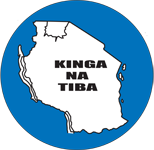
MINISTRY OF HEALTH
Neglected Tropical Diseases Control Program Tanzania

Human African Trypanosomiasis (HAT) or Sleeping Sickness (S.S) is a zoonotic disease caused by protozoan parasite and is transmitted by tsetse flies. There are two forms of HAT, acute form caused by Trypanosomes brucei rhodenmsiense and chronic form caused by T. brucei gambiense. In Tanzania only acute form is present. The disease is one of the major public health problems affects the workforce and impedes socio- economic development of the poor rural communities. The cost imposed by HAT to households includes the time they spend for treatment and caring for the sick members of the family. Convalescing individuals take long before re-engaging in substantial productive work.
he disease has spread throughout mainland Tanzania with annual recorded incidences ranging from the highest record of 3,262 cases in 1929 to 228 in 2002. In Tanzania mainland, 65.5% of the (Sq km) is infested by tsetse flies putting about 4.4 million livestock and 4 million people are at risk of contracting African Trypanosomiasis. On average each year 150,000 cattle and about 300 people are affected by African Trypanosomiasis. Currently the most affected districts for Human African Trypanosomiasis are Urambo (Tabora), Kibondo, Kasulu and Kigoma rural (Kigoma), Mpanda and Nkasi (Rukwa), Babati (Manyara) and Serengeti (Mara)